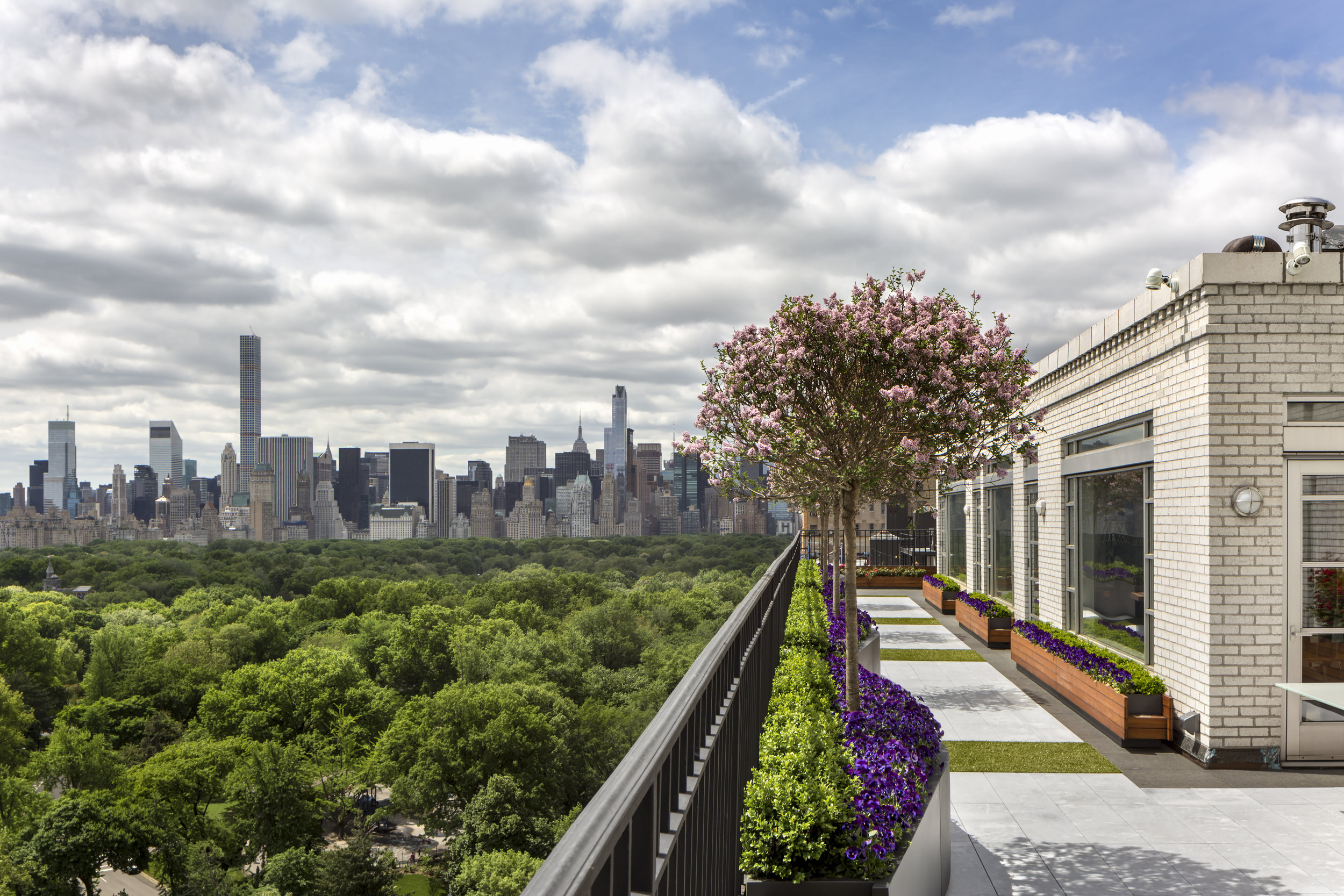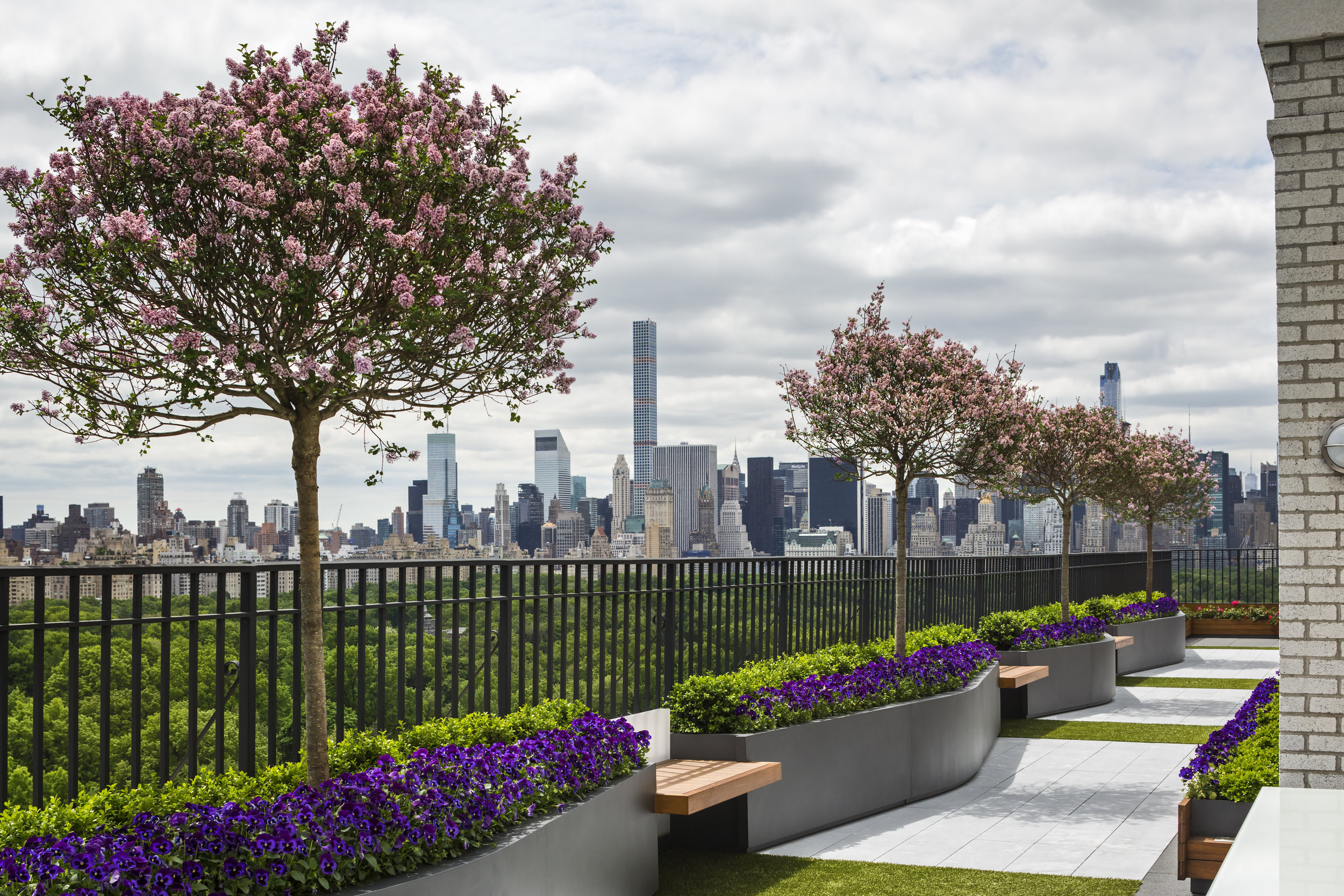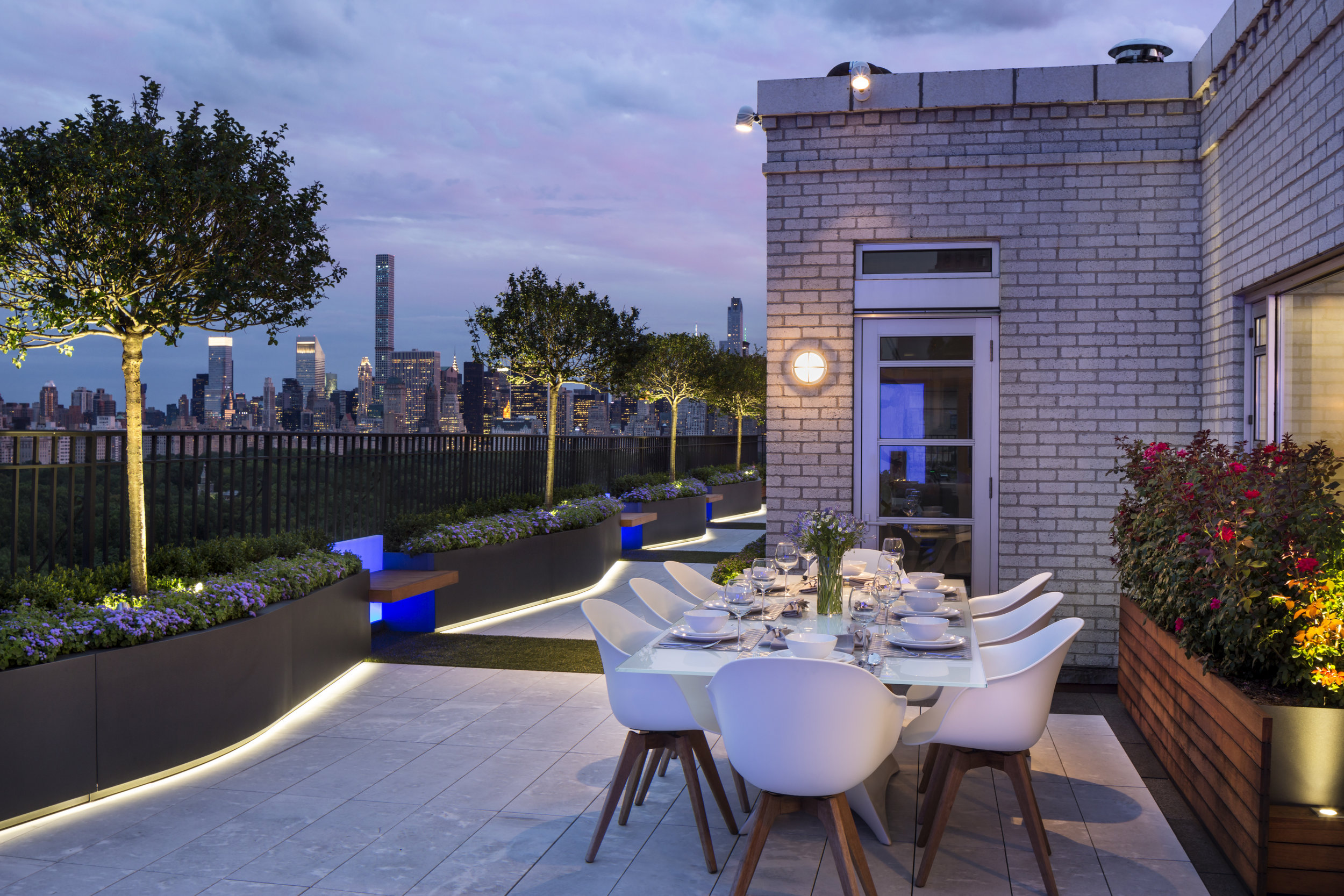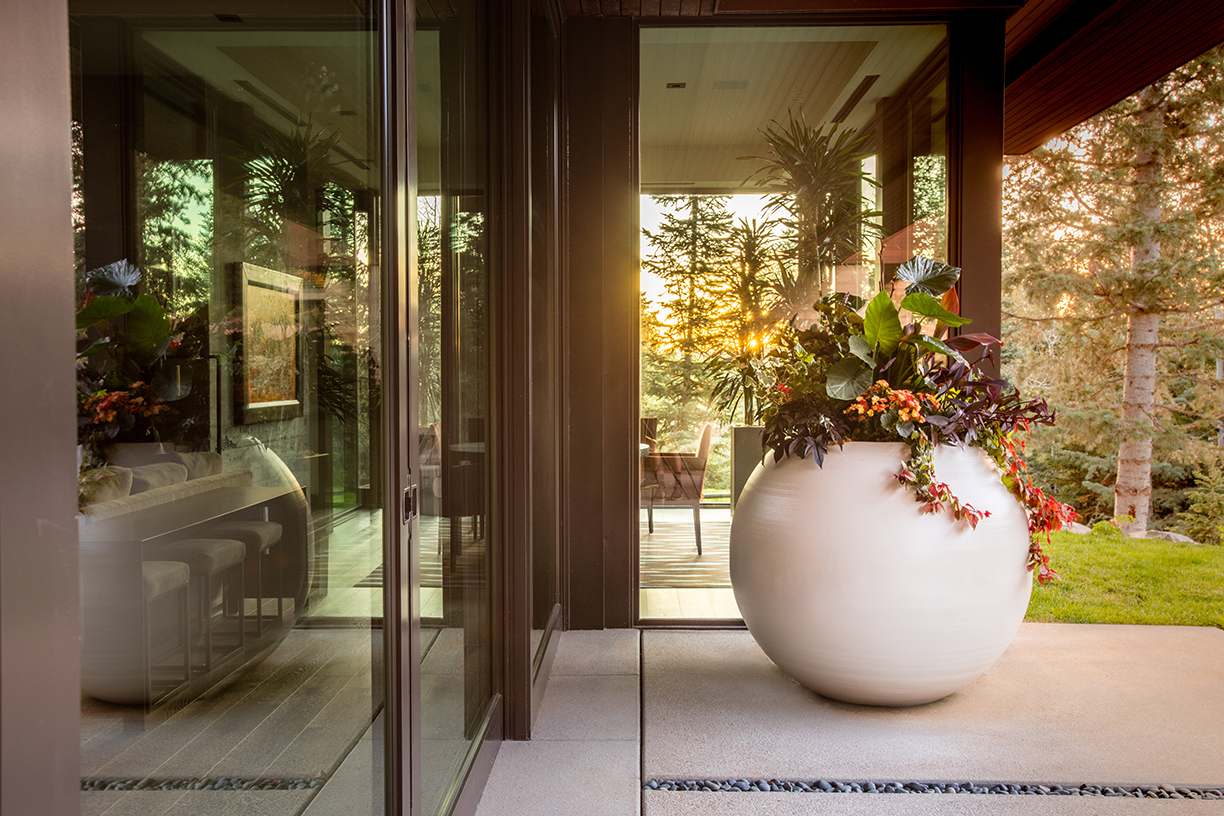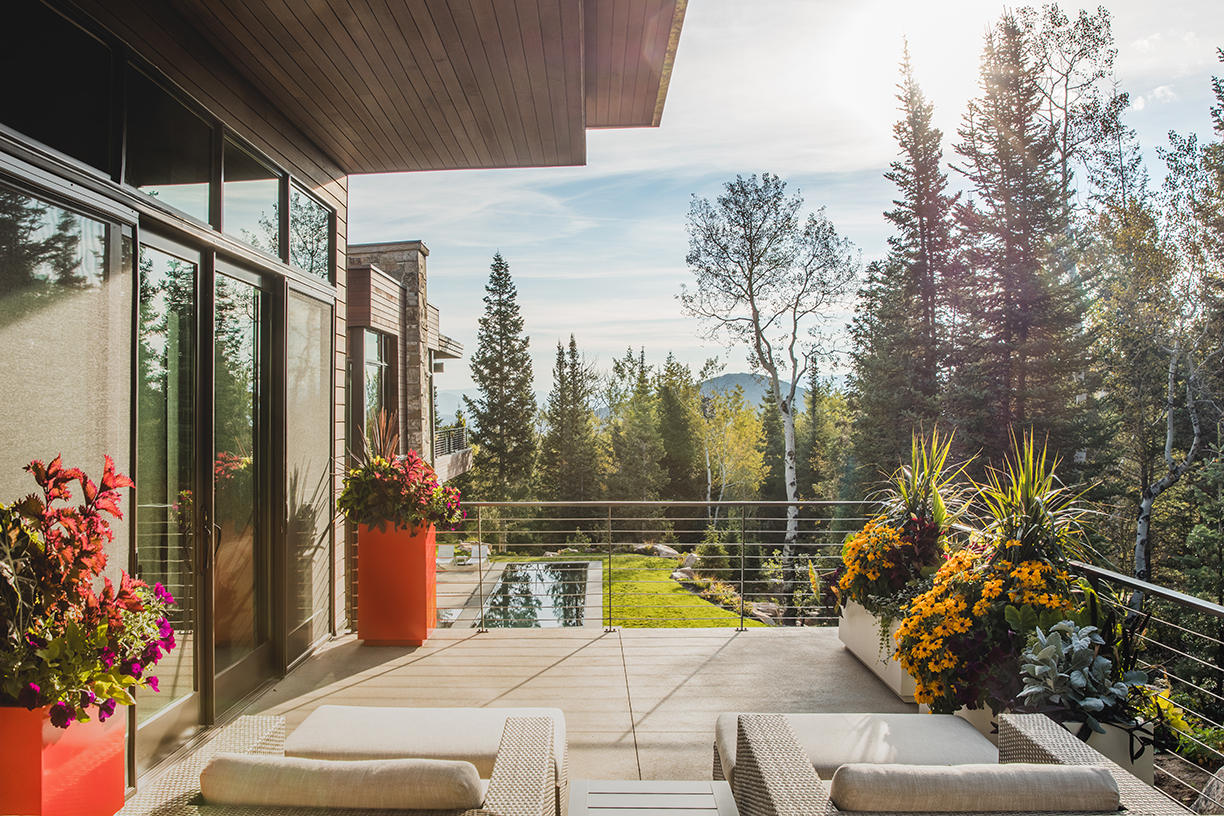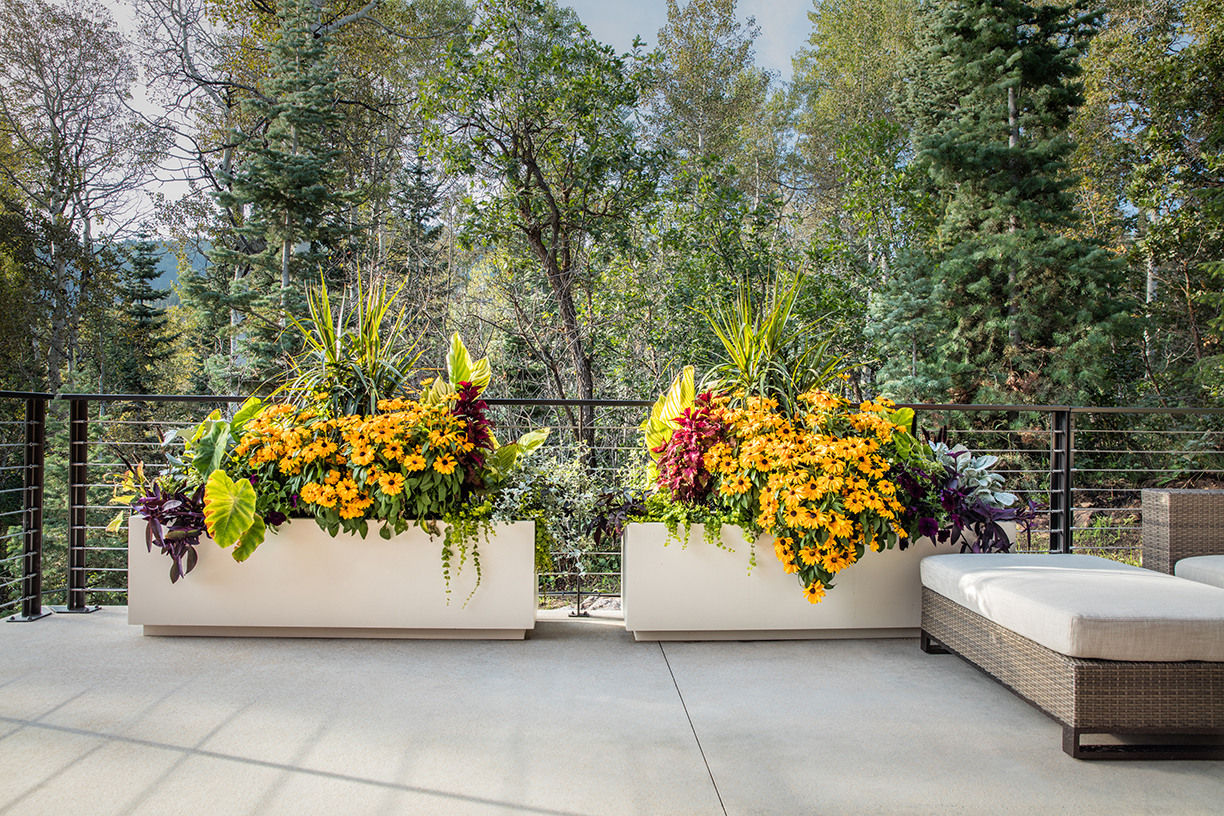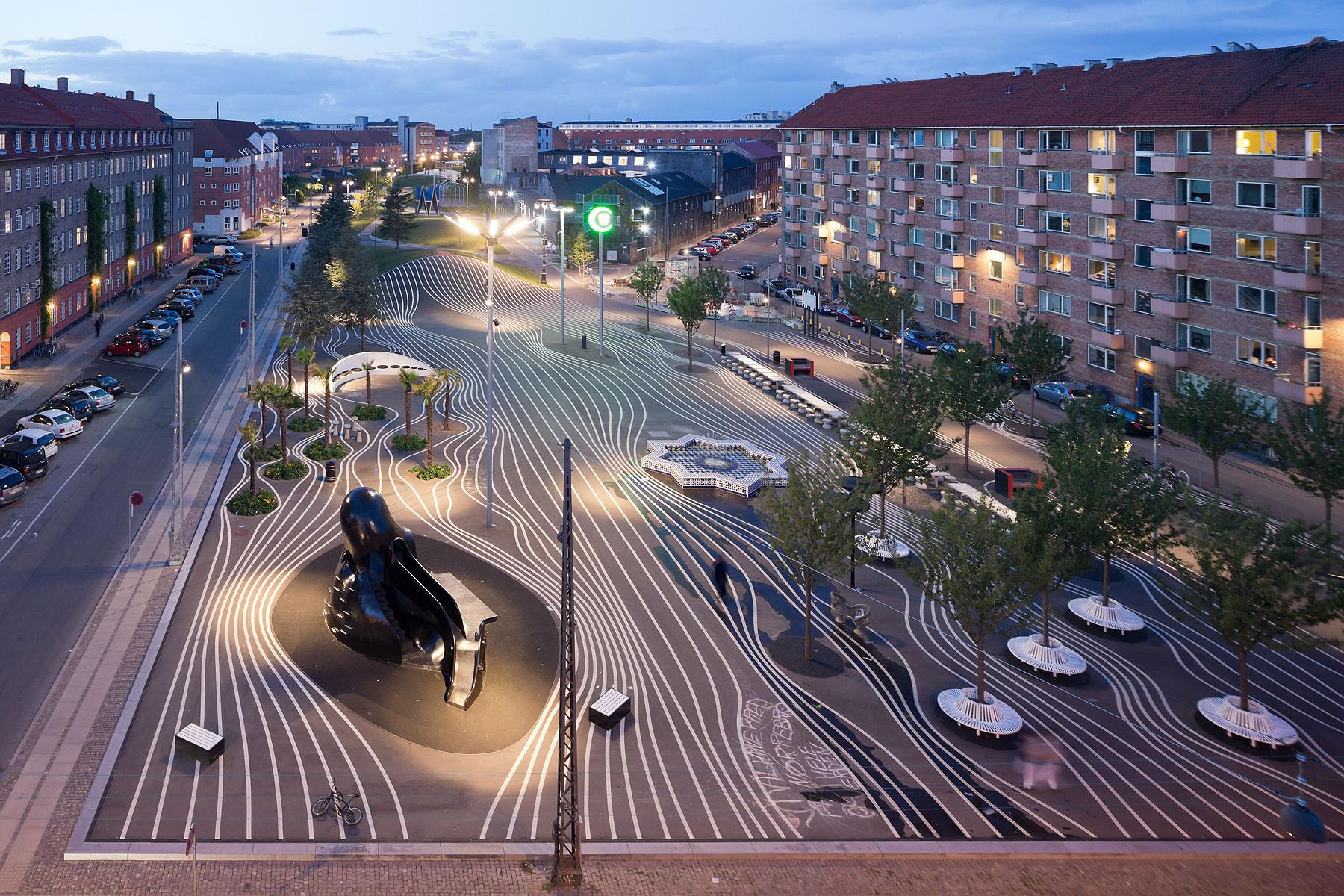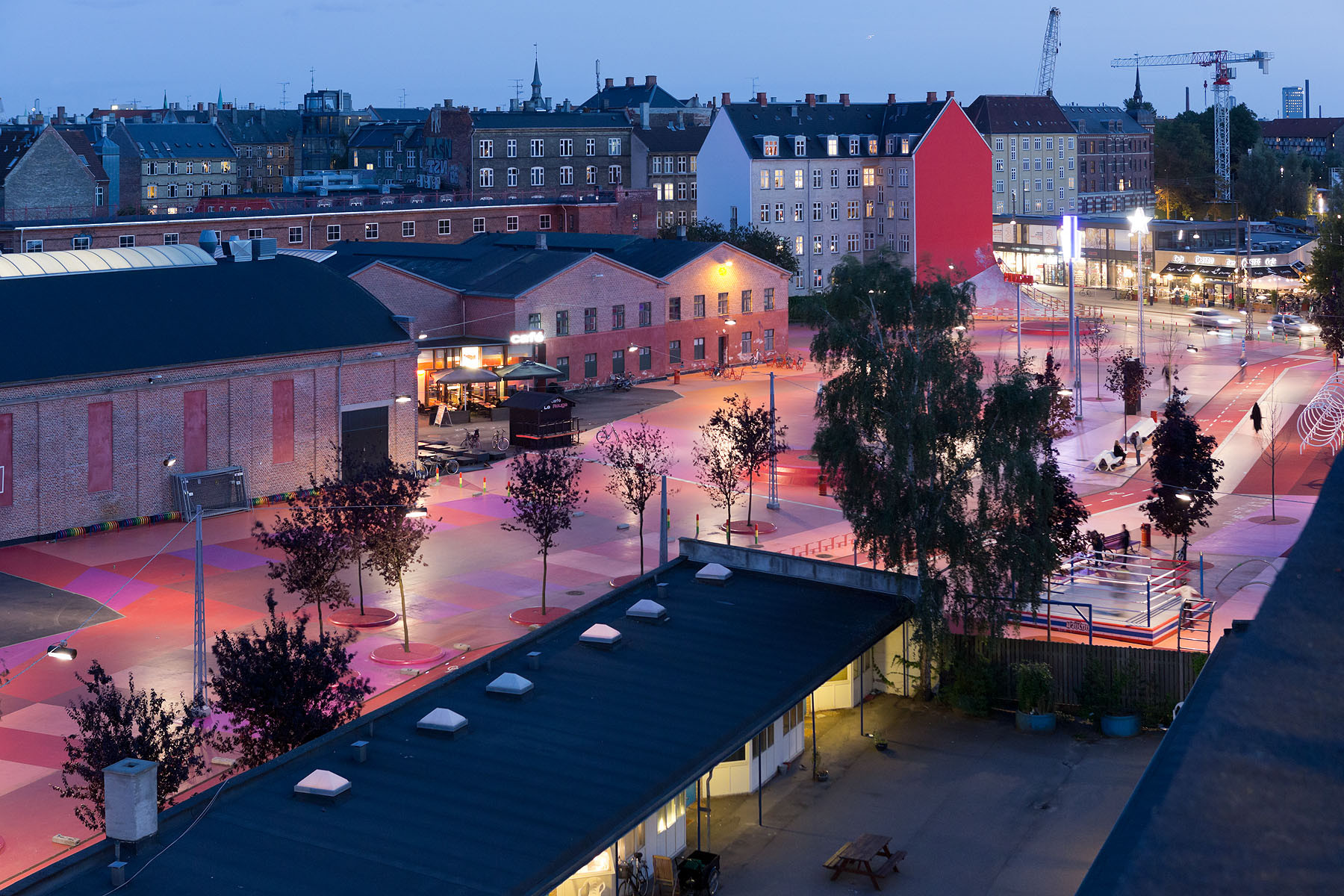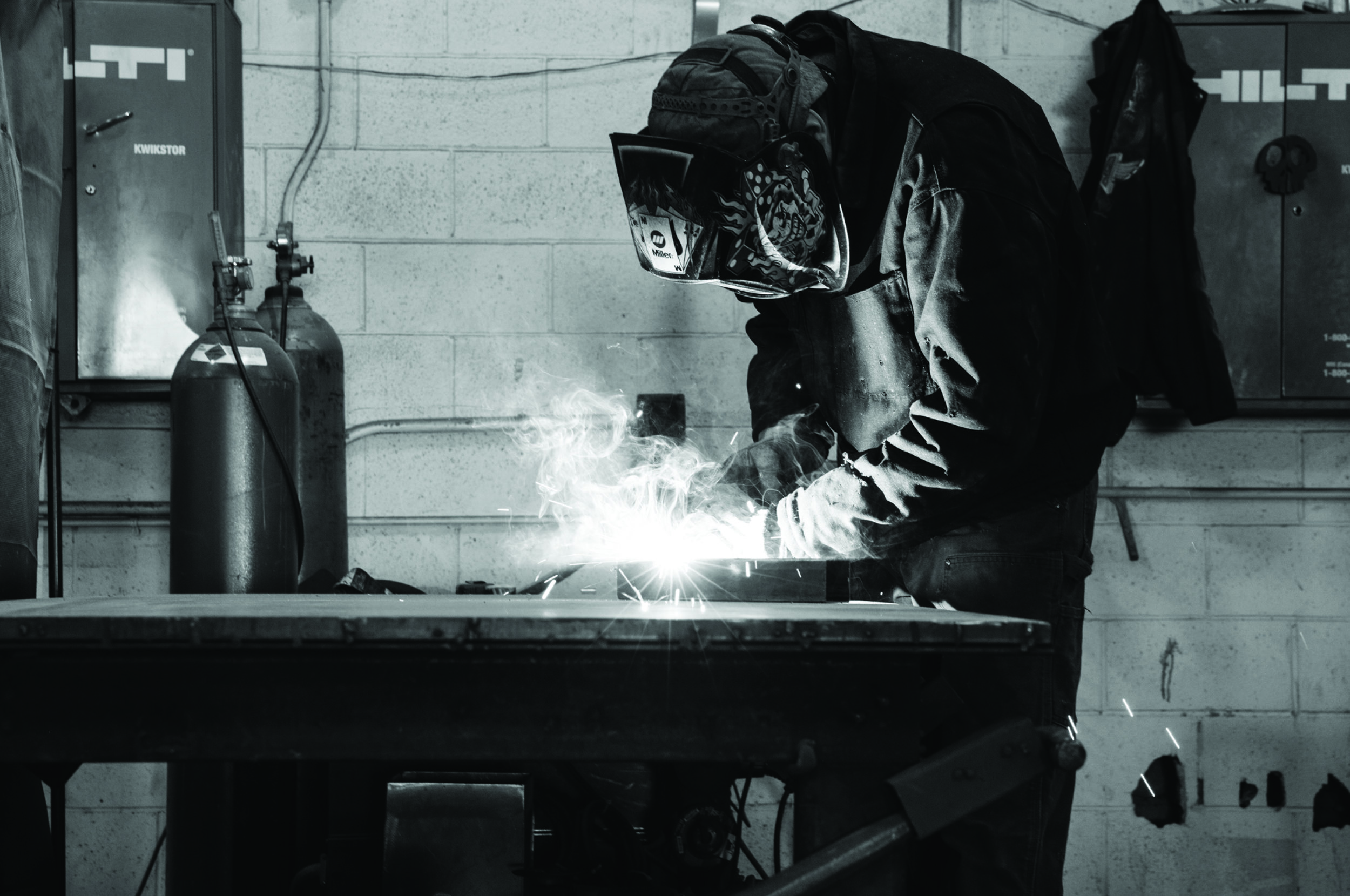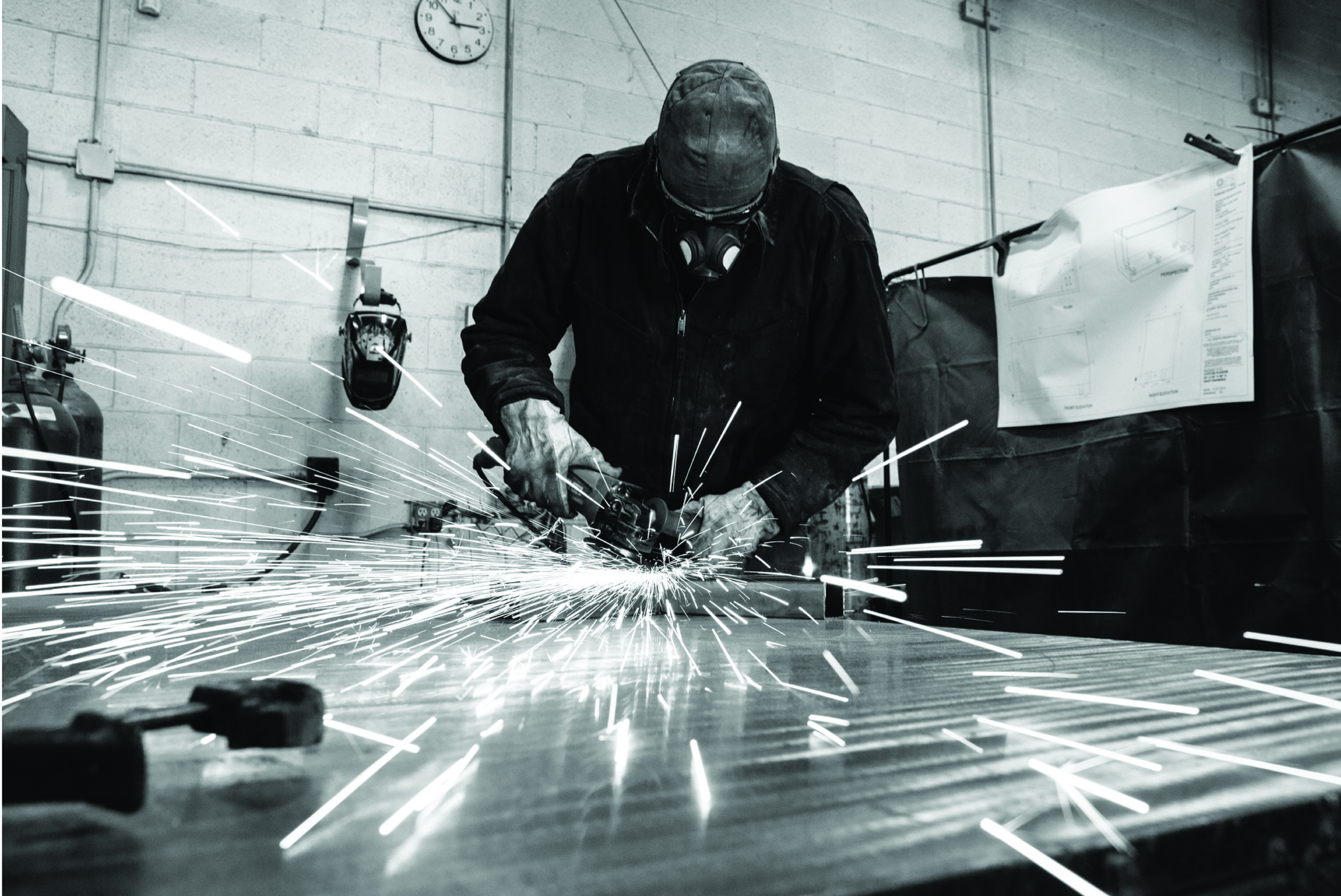Following up on the recent and stunningly beautiful performance by Genevieve Christianson at NOW-ID’s annual gala House of Apocalypse, directors Charlotte Boye-Christensen and Nathan Webster recently met with Gen and partner Shane Larson of Ore Inc as subjects for our latest Ne Plus Ultra interview series. It’s a long one but a good one. We loved hearing about this exceptional company and their world class process, design and clients and we hope you do too. Please read below as Gen, Shane, Kim, Nathan and Charlotte cover Ore Inc, Lean Manufacturing, the Zen of Welding, parallels and contrasts in viewing art vs design and Ore’s upcoming pop-up event/panel/office/party ‘Ore Offsite’at the upcoming American Society of Landscape Architect’s annual conference in New Orleans.
http://www.oreoffsite.com/
Enjoy!
Charlotte Boye-Christensen Nathan Webster
Nathan: Shane - you also have a background in fashion. Could you talk a bit about that, and how did you go from that to metal?
Shane: I was in fashion. I had moved to New York and worked for Ralph Lauren for a couple of years and did window display at Bloomingdale's and worked on product at the mansion on Madison Avenue. I had worked in clothing in the fashion industry in Utah before I moved and focused on it out there. I got to meet a great group of people. We spent time at Marc Jacob's studio and I was good friends with a couple of the Armani models. I was living the 20 year old fashion dream in New York. It was awesome, but I got my fill of that and really got interested in furniture and architectural design while I was there. I still had a shop in Salt Lake and I knew how to weld. I knew how to make stuff and decided I wanted to make metal stuff specifically, and I couldn't do anything there so I moved back to Salt Lake and started working with metal.
They were individual commissions, all custom, and most of it went to Deer Valley but over the years I branched out to projects in Las Vegas and Los Angeles and San Francisco and around the west. I ran that company for 15 years and and expanded my expertise in all metals and materials and methods of manipulation of all of those materials, so casting and welding, and all sorts of stuff.
Charlotte: Do you mainly work with steel or do you work with many different kinds of materials?
Shane: Mainly aluminum, steel, and stainless steel, bronze, whatever it takes but, at Ore, definitely the majority is aluminum.
Nathan: And now you can bring all the learning from those 15 years about the material and making to something you are able to produce repeatedly, efficiently.
Shane: It's interesting how our work has become that. We have a catalog of standard things that we don't have to think that much about anymore because we have already figured it out, which is wonderful. Yet I still get the creative head scratching collaborative relationship with architects to figure out the really complicated things and solve them with our shop, so I get both. I'm lucky in that way. Then, for us, because it's a better business model, we can scale it and, also, now it doesn't all hang on me. Others are estimating things, we talk, my office is right there. We talk all day about the projects that are going on and the shop is seven minutes away and I talk with those guys all the time. I can help but I don't have to be the guy in a welding helmet.
We're fortunate that we found an audience; we found a need out there for customizable landscape architecture related things. The timing of outdoor living as an interest on a consumer level has helped. People want to be outside, spend more time outside, and there's a lot more thought about the interaction of exterior architecture as it relates to large scale architecture, so architects and landscape architects are working closer together, or often times the architect just does the exterior as well.
Ore Products.
Charlotte: Do you find that you do most of your work locally or otherwise?
Shane: While work here is increasing, we are mostly in New York City, Washington DC, Boston and San Francisco. We specialize in roof top gardens, on high rises, both residential and commercial and those cities have a lot of these.
Charlotte: What is the concept of your upcoming event Ore Offsite, taking place in New Orleans on October 21 and 22?
Shane: The American Society of Landscape Architects have an annual conference that changes from city to city every year and we have participated every year for ten years. It's significant that a lot of our customers are in the same city, at the same time.
At the last one, we had a massive, gorgeous booth and had lots of interaction and saw our favorite customers and yet we came away from it completely exhausted and wondering why we do it to ourselves. We do know that when we speak to people at the trade show and our customers, it's much more about the social interaction - talking about things more so than walking around and looking at every little thing and seeing how it all works. The most valuable part is that social component, so we thought, "Let's just throw a party. Let's have a social event." I'm generally opposed to fun. I didn't want to throw a frat party or just a cocktail party. It had to be a meaningful party. So, we developed Ore Offsite, and we're having it at the New Orleans Jazz Market. It relates specifically to the city, it's super cool.
We're going to open with a cocktail party with hors d'oeuvres and then we're going to retire to an adjoining auditorium where we'll hear invited speakers speak on public art and infrastructure. The panel will consist of moderator Liesel Fenner - public art program director for the state of Maryland, and the panelists include Cliff Garten - sculptor and landscape architect, Angela Adams - director of public art in Arlington VA and Todd Bressi - public art and cultural planner based in Philadelphia.
The event won't be about an Ore sales pitch. Ore is presenting this opportunity for like-minded people to get together and essentially nerd out on landscape architecture. We all share this passion. I'm a metal dork but I love trees. This is what I do. It's a perfect blend.
The invitation to Ore Offsite designed by 7d8.
Nathan: It sounds like a great model, something we are into, blending social events with different forms of art or design or business, and in a meaningful way.
Shane: The last thing I want to hear is another sales pitch, and so we are bringing people together to talk about stuff that we're into - the idea of using public art to invigorate a city. We'll have product there, but it's not to be selling. Then, the following day we will set private appointments for people who want to know more and need to meet with us. We get to pull them out of the drudgery of a trade show, bring them to a nice space where it's quiet and we can talk shop if they want to.
Charlotte: We love the idea of engaging art to invigorate a city, at all scales. We were just in Copenhagen, to tour our show Exodus, and were inspired by the ways they build upon their network and lifestyle related to cycling. In one project, a park called Superkilen includes pieces inspired by and inspiring the whole community... They've invested in the area, using art in a way where it isn't this additional thing but something that grows out of the place. Many of the objects have been specially imported or copied from foreign designs. They include swings from Iraq, benches from Brazil, a fountain from Morocco and litter bins from England. There are neon signs from throughout the world advertising everything from a Russian hotel to a Chinese beauty parlour. Even the manhole covers come from Zanzibar, Gdansk and Paris. In all, there are 108 plants and artefacts illustrating the ethnic diversity of the local population.
Superkilen in Copenhagen.
Shane: That's what's interesting with gardens, they come in all shapes and sizes. Cliff Garten (speaking at Ore Offsite) does pretty things in pretty places, and he also does some interesting stuff on freeway overpasses and stuff. We've actually manufactured some of his pieces.
Nathan: In this example, are you guys talking about the concept together and then you guys produce the drawings for making it, cutting it, fabricating?
Shane: He's a unique relationship. I'm friends with the foundry in Lehi who does all of his work. They contacted me to make a lot of the pieces they were using to make his stuff, so I got to know him through the back door, and now we've worked on several projects and become pals so when this event came up, I thought Cliff could come speak. He's not really doing the sales pitch either. He's speaking of concept and public art and infrastructure.
Nathan: As an architect, I am drawn to European projects and back east, where landscape design is more considered with respect to hardscape, compared to here. I love public places in New York, Toronto, Montreal, Lyons and Copenhagen, where they really finesse the details, and the integration with a city and buildings, and how spaces are used for living. Architects and landscape architects really bring things together. A lot of projects here, but of course not all, it seems landscape architects are oftent filling in the blanks and medians and laying out golf courses and that kind of stuff, more soft instead of hard...
Shane: For sure there's still the traditional types who are thinking about irrigation and drainage and slope and grade and all of that, but the clients we're chasing are a lot more considerate about building a neighborhood and the livability, all of it.
Gen: And the outdoors are equally as important as indoors.
Charlotte: Do you feel that is developing here in Salt Lake City?
Shane: For sure. For example at the new Eccles Performing Arts Center. We did the planters directly out front on Main St, and our stuff is specified on Regent St which may potentially get some sculpture, but that's all specifically considered green space and public space. That's happening. There's quite a bit of stuff that's happening - all of the residential places here popping up, all of the apartment buildings, all of them have public space, common space upstairs. Fortunately we've done four of those projects, so for sure it's happening but moreso for us on the national level.
I spoke earlier specifically about coming back to Utah to have access to a shop, but I am also here because I have to be on my bike and ski and snowboard. I have to do all that stuff that I missed that when I was back east. I love to be outside. I love to play. Here, we live in the city essentially and I can be on my bike and on a trail in ten minutes. It's awesome. That is a big part also, the lifestyle part, for us being here. I get my city fix all throughout the year as I do most all of the traveling for Ore, so I'm always in the city, which is awesome.
Ore custom made piece.
Charlotte: It's important to continuously have in mind what's happening in the rest of the world, with regards to your field but also in general. That global perspective is super important to our company. Otherwise I don't know what we're comparing ourselves to.
Gen: That's how the Ore Offsite was born as well, with that in mind. It's a small world, yet it's huge with regards to landscape and architecture. We seek a collaborative process and to learn while we're doing it and we're here. Yes, we're Ore - We can help you come up with solutions and you can use our product; however, we want people to meet and interact. Our guests will continue to support ASLA, walk the floor but, for the same amount of money as participating, Ore will throw this amazing gathering.
Nathan: It'll be way more memorable for everybody, and you will stand out.
Gen: Exactly. Then people will have one-on-one contact with new customers and with our current line and people. As we found out, the last few years they've been coming to our booth and weren't walking around looking at new product. They would bring plans to our booth and want to talk about that. We thought, we don't have space for that, and then you have people that are taking pictures of our stuff and walking away.
Nathan: It's fun. I like the model, that you have an event, but also have the day or times to meet individually with people like that, like a little popup office.
Gen: We hope that it continues. That's why Ore Offsite is so great, because it can be anywhere.
Charlotte: In all of your travels, what city strikes you as being the most conscious of urban planning and outdoor spaces?
Shane: New York is really good, it's really amazing what they're doing there, on that tiny little island, but space is hard to come by.
Nathan: Which space is coming to your mind as you're saying that, any in particular? Or planning moves in general?
Shane: Both, just the overall attitude there. It's always considered. The common area. The entrance to the building. Individual spaces and decks and how it all works. Right now in Manhattan, we're working on some amazing projects. We're working on our second Renzo Piano job. We're working on a deck for Jeffrey Koons, and we're doing a project for Robert Stern. We're all over the map.
Gen: A lot of people hear about us from other firms. Something that's very unique about us is that we're very collaborative to work with. Our customer service is pretty awesome, and you get to talk to Shane to help come up with solutions for the dreams and ideas in your head. We can make that a reality. We have our own shop and we build everything from start to finish.
Shane: We also 3-d model everything we make. The manager of the Department is a licensed architect. We show 3-d models describing conflicts or problems and digitally our solutions, how it can work. We add a lot of value to these firms, who rely on us to take this and kick them back a list of problems and solutions.
Charlotte: It has to be interesting to work with so many different mediums: You're working with artists, you're working with architects, you're working with landscape.
Shane: I like that. For me, I'm a methods and material guy, so it doesn't matter if it's fabric - it's all different ways of manipulation. It's the same with metal, to create the end result, and the aesthetic is the driver - What methods and materials and how are you going to manipulate them to create that? That's really what we bring to our customers. Often times they're showing us the end result and we have to think, Oh, well, that's got to be aluminum or that's got to be bronze, or then it's going to have to be cast, or we figure out the methods to manipulate the material, whatever it is, to get to that. That's how my brain works.
You guys, NOW-ID, what you do and what Gen does as a singer is a lot more nebulous. What's the end result is something we are trying to convey. I make something you can park your shit on, something that you can run into. You guys are trying to transcend something. That's the hard part. I can deal with a table.
Nathan: It's true. I see the intangibles, the indefinable. You're like, "Where's the hard table at the end of this? What am I holding on to?"
Shane: You don't know what it's going to be until it is over. That's horrifying to me. I can make something and stare at it and walk around in circles and pull it back apart and put it back together. I'm after the end aesthetic effect.
Nathan: I think Charlotte is too. It's fascinating for me to watch her process. It's so intuitive, different I'm sure than how you work, but she too is seeking an aesthetic and it is a making that creates a world. There's a world onstage.
Charlotte: There's a real craft too.
Shane: And quality right? At the very least it has to be interesting to look at or pretty and you are trying to move somebody with it.
Nathan: Yeah, but there is something there. It's also interesting just to watch how different people interpret. Some people want to understand, to know... the story, to say this is what I saw as the story. Others are content to just feeel good through the whole thing.
Shane: Yeah, there's lots of discussion about art and the viewer. It's all about the viewer. It's the same piece but it could mean photography to one person, or it could be a really important social statement.
Nathan: It happens in the design world too. Most people don't have the language to describe it or understand maybe the history or proportion, but when they experience an object or a space, not necessarily foreground big shazam big designs... there's something about architecture or design that just is and is solid, and yet if someone does pay attention they realize there's something that went into that... There's again an unspeakable quality that comes out through the making, the story, that informs those things.
Charlotte: I think maybe because I grew up in Copenhagen, design is so much part of my/our DNA. The whole craft element of design is super important.
Shane: Yeah, it's social. There's an apprentice and there's a master. It's terrific. It's different in America. It's interesting. It seems to be, in the past also, there's a lot more utilitarian here. Think of Los Angeles, the river channels, the canals, these massive concrete structures that with a little strip of water and not appealing or attractive in the least, compared to the way they think about waterways and transport in Copenhagen. The US attitude is it holds water. At a society level it doesn't have to be pretty. That just costs more. It's the value of it, values are different.
Charlotte: Yeah that's so interesting, because the value aspect is crucial in that discussion?
Shane: Yeah, in the US it seems everybody can get to the practicality utilitarian way. It works.
Gen: You go to places like Italy and Copenhagen and France, you have to work with what you have and you better make it look good. That's only fair.
Shane: There's a lot more city living, people walking around.
Nathan: That's what I was going to say too - how a society or individual engages with the city makes a difference. If you're always in your car you're not seeing things at the same way as if you're walking or biking on the Vancouver seawall or the harbor in Copenhagen.
Charlotte: We were so excited to have Ore's support and to work with Gen as a singer at our House of Apocalypse Gala this year. Can you tell us more about Gen's role at Ore?
Shane: She knows all of the front end of the business and has expertise in all that front end part of the business. Today we have a proper CFO with a proper education and work history and the whole bit and he's constantly in Gen's office asking for her help and taking advantage of her brain. Kim and I were talking about it yesterday buy we had an employee ask, What is Gen's title? Well, that's a good question.
Kim: Yeah we don't know. She does everything.
Shane: Yeah and does it well. She has a high personal standard. She's super helpful for me because I'm focused, like all humans, on my sharpest tools, so I always use my sharp tools, right? I leave my dull tools in the tool box. She has the sharp versions of my dull tools so her perspective is always very helpful and insightful.
Nathan: That's fantastic.
Charlotte: Does she miss singing though?
Shane: She doesn't miss performing and the stress of all of that. She doesn't miss traveling because she used to travel a lot. She misses singing and she has never stopped. She just performs a lot less frequently but she always has something going on.
She comes to life on the stage. It's so much fun to watch her do it. Whenever you watch a passionate, talented person practice their craft, it's awesome to watch, whether you are into the craft or not, to watch it happen.
Charlotte: Was this where you originally started the company, out here, wherever we are, at the manufacturing facility?
Shane: No so we were in West Salt Lake, which turned into Orem and then a number of places. When I started, my family always had a shop so I had a space to work in. Then I rented storage space in Murray and I expanded a bunch of storage units together, I think it was maybe like 5,000 square feet.
We started out in one space here in North Salt Lake and now I think we have 8 spaces or so. This has been fine out here, it's been convenient and weíve been able to grow into additional space. It hasn't been the most ideal, how it's all set up, you'll see but we've moved things around enough time that it's nearly the most ideal. It's still close to our new office, but it's out of the way so the rent is competitive.
Kim: Have you talked about Lean Manufacturing yet?
Shane: It is a manufacturing philosophy on how to make things in an efficient manner. The current thinking in the Toyota manufacturing technique has revolutionized American manufacturing. Toyota, Japan had known of it for years and the manufacturing techniques that Toyota developed is the primary reason that they were able to destroy the US market competitively. They can produce a better product for a cheaper price, consistently, and fast. It's all based around this really philosophical method to the point you can now follow it. There's an instruction booklet.
It's all about identifying waste in a process and eliminating it so you're only doing pure process stuff. In this philosophy you have to identify what is value add time, value add time is what customers are willing to pay for. A customer wants their planter welded together, right? You have to maximize the amount of welding that you do in a day. The customer is not willing to pay for the fabricator walking over and picking the piece off the cart or looking at the blue print or moving it around, that's all waste.
It's literally about looking in a microscope at each and every process and figuring out how you can eliminate the unnecessary stuff so that the welder is squeezing the trigger on the welder as long as possible.
And when you can do that the results are extraordinary. Locally - OC Tanner has gone through the Lean transformation and has actually won awards in it. OC Tanner - they're not just the jewelry store - actually make little trinket things for award stuff and they have a many different variations. One of their products used to take 26 days from the time the phone rang to the time it went out the door. Now it happens in an hour. They tripled their throughput with the same number of people just by getting the unnecessary stuff out of the way. Herman Miller too, an Aeron chair comes off of their line every thirty seconds.
Yet, there is resistance in general to the whole concept, because it's so counter to the traditional American method of manufacturing in an assembly line.
Charlotte: Do you miss the hands on experience? Because I could imagine that would be kind of be therapeutic.
Shane: I do a little bit actually.
Nathan: It's zen for me to physically make things sometimes. As architects, we are often in the world of the screen, both finite but infinitely large, and it's fun to break from that reality, get dirty, use the body, to work around the house or something where I'm actually picking up a piece of wood and figuring out how it goes together and seeing that coming together of things. I think it's good for my brain too, to exercise different parts, think at a different pace. Same for good old hand drawing.
Shane: Yeah, you're plugged in a different way. I was at the shop just the other day, and there were some things that weren't quite right, so I grabbed the sander and I was working on the finish and I thought God, I miss fine-tuning a finish.... you know, this is pretty good. Some of the guys have worked down there long enough that they've seen me put the welding helmet on and show them how to do it.
Kim: Like that time that you were testing that patina, there was literally an audience of 15 people by the end of it because Shane had put on his wellies and we were like What's happening?
Nathan: That's awesome, though.
Shane: It is good. Everybody's had the boss that doesn't know what the fuck they're talking about and telling everybody what to do, but I actually know what the fuck I'm talking about, can speak shop speak, and I would rather operate from that level. I get to use all the language that I grew up with around job sites, and one of my favorites that everybody at our shop knows is, stop at perfect. Perfect is good enough.
Charlotte: Well there's also this whole, obviously, different investment, because it's also your company. You started this.
Shane: It's got to be right.
Charlotte: Sometimes that's sort of exhausting - I find that exhausting. You know what I mean? You want things to be freaking perfect.
Shane: Right and that's the other critical part of Lean. The goal of Lean Manufacturing is more out the door at either the same acceptable or higher level of quality. You can't make stuff faster and give up quality. It has to be better quality, and faster through.
Charlotte: Also the fabricators, the guys welding stuff. They are artisans, right? They take stake in what their making. It's a craft to them. It is so interesting though, when I see people not doing what would make them more competitive globally.
Shane: They don't believe. One of the books I'm reading right now makes the point that, in order to understand, you have to disagree. In order to get to the understanding, you have to say You're full of shit. That's wrong. You're wrong. Because this is how I do it and I know how I do it is the right way. So you have to go through that discovery.
Nathan: That's true. It's important to have those discussions.
Shane: So we as a company talk about it all the time. We have Thursday afternoon book club where all of the managers and all of the department leads are reading a specific book on Lean so we can get a universal language and a universal understanding about it.
It's awesome because one of the primary points of Lean is that it is not driven by management. It's the artisan. They know. They know how to make it faster. They know what's in their way. Management's job is to ask the right questions and to listen and then provide them with what they need to do their jobs. Period. That's all it is. You go out and ask the fabricators, what's a pain in the ass for them?
They may say: I can never find a hammer. I say, Why the fuck don't we have ten hammers, a hammer at every station?
The biggest differences are the simplest things. In one of our patination processes, an oxidizing process, the person on the night crew had morphed it into his process which took ten hours. Heíd do it then put it out in the parking lot and it has to be in the sun four or five hours and then it comes back in and then you hand rub it and then you put the glaze on it. It was the most ridiculous thing. We can't have stuff sitting around for a shift. But it was what was going on and needed a fix.
It was my patina process. I developed it, so we got the video camera, I went out there, took the same pot, took my jacket off, put my muc-lucs on and I patina'd a pot from start to finish in. Thirteen minutes. Now that video is the training video. You do it like this!



